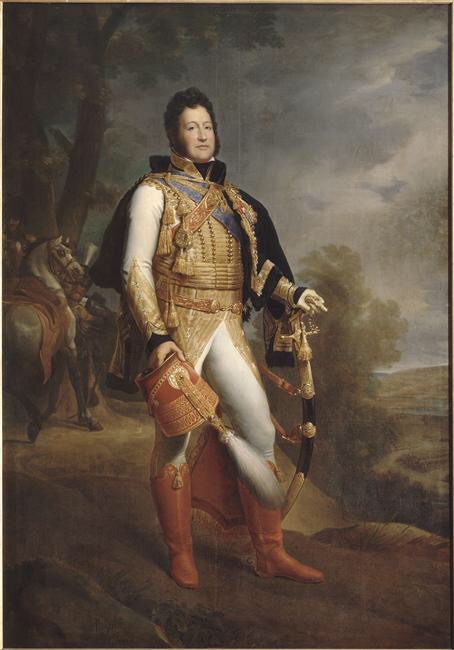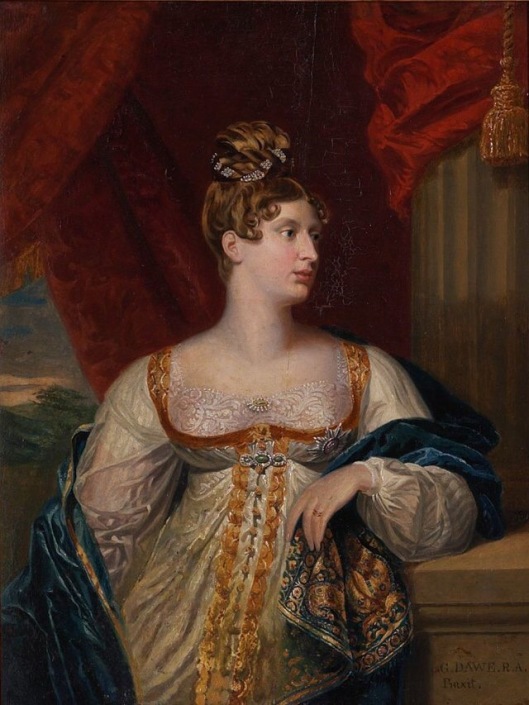Tags
Archduchess Maria Carolina of Austria, Archduke Charles Ferdinand of Austria, Archduke Leopold Salvator of Austria, Duke of Madrid, Duke of Montpensier, Grand Duke of Tuscany, Holy Roman Emperor Leopold II, Infanta Blanca of Spain, infanta Luisa Fernanda of Spain, Infanta María de las Mercedes of Spain, Infanta María Isabella of Spain, Infanta Maria Luisa of Spain, Infante Carlos of Spain, King Alfonso XII of Spain, King Carlos III of Spain, King Carlos IV of Spain, King Ferdinand I of the Two Sicilies, King Fernando VII of Spain, King Louis-Philippe of France, King of Naples and Sicily, Maria Amalia of Saxony, Maria Amelia Teresa of the Two, Maria Christina of the Two Sicilies, Maria Dorothea of Württemberg, Maria Luisa of Parma, Prince Antoine of Orléans, Princess María de las Mercedes of Orléans
Princess María de las Mercedes of Orléans (June 24, 1860 – June 26, 1878) was Queen of Spain as the first wife of King Alfonso XII of Spain. She was born in Madrid, the daughter of Prince Antoine of Orléans, Duke of Montpensier, and Infanta Luisa Fernanda of Spain.
Her father, Prince Antoine of Orléans, Duke of Montpensier, was her first cousin once removed, and the youngest son of King Louis-Philippe of France and his wife Maria Amelia Teresa of the Two Sicilies, the tenth of eighteen children of King Ferdinand I of the Two Sicilies and Archduchess Maria Carolina of Austria.
Her mother, Infanta Luisa Fernanda of Spain, was the younger daughter of King Fernando VII of Spain and his fourth wife and niece, Maria Christina of the Two Sicilies, the daughter of King Francis I of the Two Sicilies by his second wife, Infanta Maria Isabella of Spain, the youngest daughter of King Carlos IV of Spain and his wife Maria Luisa of Parma. Infanta Maria Isabella of Spain was the sister King Fernando VII of Spain, the father of Infanta Luisa Fernanda of Spain.
Infanta Luisa Fernanda of Spain elder sister was Queen Isabella II of Spain.
Born at the Palacio Real in Madrid on June 24, 1860, Mercedes was the sixth of her parents’ nine children. Her mother’s elder sister, Queen Isabella II, and brother-in-law, King Francisco, served as Mercedes’ godparents at her christening, when she was given the names: María de las Mercedes Isabel Francisca de Asís Antonia Luisa Fernanda Felipa Amalia Cristina Francisca de Paula Ramona Rita Cayetana Manuela Juana Josefa Joaquina Ana Rafaela Filomena Teresa Santísima Trinidad Gaspara Melchora Baltasara et omni sancti.
Although Mercedes was patrilineally a French Princess, she was also a Spanish infanta and spent the first eight years of her life in Spain. Her childhood was spent at the Palace of San Telmo in Andalusia, her father’s rumoured aspirations to obtain his sister-in-law’s crown periodically rendering him unwelcome at the royal court in Madrid.
Marriage and reign
When Queen Isabella II was deposed in 1868, Mercedes’ family left Spain for exile. It was reportedly during that banishment in 1872 that she met her first cousin Infante Alfonso, Prince of Asturias, also living in exile. Queen Isabella II opposed a marriage between the two due to the hostilities between Mercedes’ father and the former Queen.
Upon restoration, King Alfonso XII of Spain married María de las Mercedes at the church of Atocha in Madrid on January 23, 1878, following a huge ball in December 1877. Allegedly, the King’s choice dashed the hopes of his still-exiled mother Queen Isabella for Alfonso’s marriage to Infanta Blanca de Bourbon, daughter of his Carlist rival Infante Carlos, Duke of Madrid.
Infanta Blanca of Spain (1868 – 1949) was the eldest child of Infante Carlos, Duke of Madrid, Carlist claimant to the throne of Spain and his wife Princess Margherita of Bourbon-Parma. Blanca was a member of the House of Bourbon and – according to the Carlists – an Infanta of Spain by birth.
In 1889 she married Archduke Leopold Salvator of Austria. The couple had ten children. The family left Austria after the end of the Monarchy and finally settled in Barcelona. When the male line of Blanca’s family died out at the death of her uncle, Alfonso Carlos, Duke of San Jaime, some of the Carlists recognized her as the legitimate heiress to the Spanish throne.
Queen Mercedes helped build a new temple after the Church of Santa María de la Almudena was demolished in 1868.
Death
Shortly after their honeymoon, it became evident that Queen Mercedes suffered from typhoid fever. The marriage would last only six months, during which she reportedly had a miscarriage. She died due to the fever on June 26, 1878, just two days after her 18th birthday.
When the King’s minister Cánovas del Castillo suggested that he take a new wife, King Alfonso XII acquiesced, choosing Mercedes’ sister Infanta María Cristina. For a few months he courted Infanta María Cristina, who was willing to replace her late sister, but it soon became clear that she was suffering from tuberculosis. Maria Cristina died at the age of 26 on April 28, 1879 in her native Seville
In late 1879, the King married Archduchess Maria Christina of Austria-Teschen; a daughter of Archduke Charles Ferdinand of Austria (grandson of Emperor Leopold II) and his wife, Archduchess Elisabeth Franziska of Austria, the daughter of Palatine Joseph of Hungary, Archduke of Austria (1776–1847) and his third wife Maria Dorothea of Württemberg (1797–1855).
Palatine Joseph of Hungary, Archduke of Austria, was the ninth child and seventh son of Holy Roman Emperor Leopold II, Grand Duke of Tuscany and Infanta Maria Luisa of Spain, daughter of parents, King Carlos III of Spain, King of Naples and Sicily, and Maria Amalia of Saxony.
The eldest child, of King Alfonso XII and Archduchess Maria Christina of Austria-Teschen was Infanta María de las Mercedes (1880 – 1904) was named in honour of Queen Mercedes. She was Princess of Asturias, the heir presumptive to the Crown of Spain, for all 24 years of her life.
Had her younger sibling, unborn at the death of King Alfonso XII, been a daughter, Mercedes would have been Queen of Spain. The sibling proved to be a boy, King Alfonso XIII, a King upon his birth in 1886, and Mercedes turned out not to be queen.
She resumed the position of heir presumptive, which she held until her own death, and was succeeded in it by her own infant son Prince Alfonso of the Two Sicilies, King Alfonso XIII having not yet married and fathered a legitimate child.
Mercedes married in Madrid on February 14, 1901, to her second cousin, Prince Carlo of Bourbon-Two Sicilies, a nephew of the King of the then-defunct Kingdom of the Two Sicilies, who was elevated to the rank of Infante of Spain. The marriage was highly controversial due to her father-in-law’s ties with the Carlists. She died three years later from complication while giving birth to her third child.










